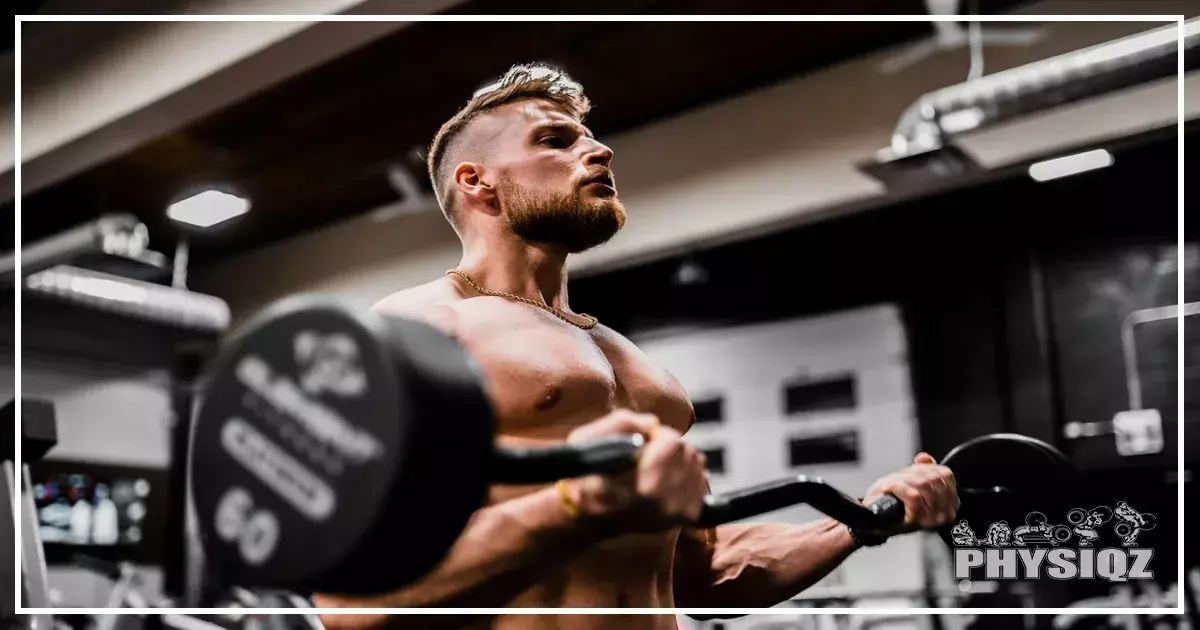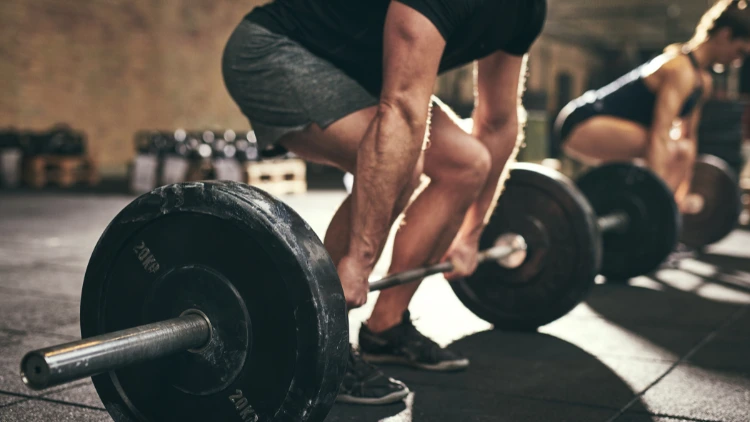
No matter their experience level, when a lifter is getting stronger but not bigger, they’re likely doing this 1 thing badly – not performing enough volume to elicit hypertrophy – which essentially means muscle did not grow because there weren’t enough seats, reps, or weight done in the gym.1
Yes, strength and size can go hand-in-hand. But when the ability to lift heavier loads doesn’t correlate to size, volume and/or rep ranges can be the culprits so be sure to examine these factors to understand how to increase both strength and size over the course of a training cycle.
Why Have I Gotten Stronger, But Haven’t Gotten Bigger?
Volume is a serious indicator of muscle growth so don’t expect size gains if you aren’t adding enough volume to your workouts. A program that is not pushing volume into muscle-building ranges is likely building strength without causing enough metabolic stress to muscle tissue to warrant repair, which increases size. Without an increase in load, repetitions, and sets per muscle group, lifters are going to only meet their minimum effective volume (MEV), and maintain muscle size, rather than build it. Working higher than the MEV, increasing load, reps, and sets, will allow your muscle tissue to grow in response to stress, causing muscle hypertrophy.
Not to mention, rep ranges to increase strength are usually programmed in the 3-8 range. While the ability to increase load over time can result in strength gains, muscle size can be generally unaffected – this is why it’s common to see bodybuilders who aren’t relatively strong for their size or powerlifters who aren’t relatively big for their strength.
In addition, effort and intensity within sets can also affect muscle size. If the load is not challenging enough to be near failure within the last few reps of the set, the optimal muscle-building conditions are not met. Most people are obviously able to lift a higher load over 3-8 reps, but fatigue plays a role in form and technique which can cause loss of mind-muscle connection and the ability to completely concentrically contract.
Therefore, training at a volume of 5-30 reps at a lighter load, between 30-85% of a lifter’s 1RM is going to induce muscle fatigue and maintain mind-muscle connections more evenly throughout the entire set, resulting in ideal muscle-building benefits from each rep.
Lastly, protein intake is also crucial for muscle growth due to protein synthesis and a lack of protein can inhibit muscle repair, and stunt size increases.
Suggested Reading: Deadlifting stunt growth.
Or in other words, when the body is properly fueled and protein needs are met, proper muscle repair occurs and muscle spindles can grow in response to stress, resulting in size gains.
It Could be Training Variable Inside the Gym: Gain Size by Optimizing These
Along with the points above, there’s several things lifters might be doing in the gym which can effect their end-results. So inspect these elements to see if they’re an underlying cause and be sure to dial them in.
Periodization of volume: Periodizing training to work smarter within muscle-building ranges depends on minimum effective volume (MEV), maximum adaptive volume (MAV), and maximum recoverable volume (MRV). Programming training to include microcycles that increase in volume will help exceed the MEV, so that muscle is being built and not just maintained.
Increasing the volume from microcycle to microcycle (like a week to week) will not allow the body to adapt to the load until the maximum adaptive volume (MAV) is reached. The maximum adaptive volume is the amount of load the body can withstand before becoming desensitized to the load. MAV should increase from microcycle to microcycle until the maximum recoverable volume (MRV) is reached.
When MRV is reached, the muscle will not withstand the load placed on it and a deloading period should be programmed into your training in order to prevent overtraining or injury. With a proper periodized program, both volume and deloading should be implemented in order to effectively continue muscle growth.

Source: StefanDahl via Canva.com2
Exercise choice: Compound movements are surefire ways to make great strides in increasing neural adaptations and seeing strength gains. Adding isolation movements on top of compound lifts can hone in on specific muscle groups in order to see growth more quickly. If you feel like you’re increasing in strength but not in size, adding isolation exercises can target different muscle groups specifically to result in growth. Plus, working in isolation lifts for specific muscle groups allows an increase in volume without taxing the entire nervous system from big compound lifts like squats, deadlifts, or presses.
Intensity: Focusing on proper form, technique, and activation patterns can increase strength and hypertrophy. Maintaining mind-muscle connection and maximum effort through repetitions can expedite neural pathway growth to muscle tissue.
Variables Outside the Gym That May Be Holding You Back
As many say, muscle is built outside of the gym and this is largely true because stimulus without proper recovery variables is futile.
Recovery: Allowing time for muscles to adapt to the changes from training allows growth to maximize. Rest periods, deloading phases, and days off all matter when it comes to building muscle.
Lack of quality sleep: While at rest, the body undergoes muscle and tissue repair in order to keep up with the stress demand placed on it. In this case, the stress is the load or weight. Increased load and working close to failure create microtrauma within the muscle that the body works hard to repair while at rest. When there is a lack of quality sleep, these time periods where the body repairs itself are shortened, and muscle gains are not maximized.
Diet: What you eat is a controllable variable that can have a serious impact on gains. Increased frequency in training and increases in load are going to break down and require more protein intake to repair and build muscle tissue during protein synthesis.
Caloric surplus: If there is not adequate caloric intake and even a surplus in calories, muscle growth is going to be slower as a result. In order to fuel for this increase in calorie burning, most lifters should increase their caloric intake by between 200-500 calories in order to sustain muscle growth. Concentrate on ensuring you get adequate protein, even outside of your anabolic window, as you can see that a groundbreaking study shatters protein timing myth.
Hydration: If you are dehydrated and your muscle cells are stripped of water, the contractile ability of these cells is decreased and your workouts can be rendered less effective as a result. Cell dehydration is linked to muscle wasting and decreases in strength. In order to maximize your muscle gains, your cells need fluid. Water intake is crucial, so monitor sweat loss and be sure to take in plenty of water.
Other Reasons You May be Getting Stronger but Not Bigger
Outside of the variables above, there can be other reasons why you’re not growing. Health issues like hypothyroidism can cause skeletal muscle tissue to struggle to grow.
With hypothyroidism and weak hormone signaling, muscle tissue cannot convey the signals needed to increase nutrition to the tissue. This prolongs or delays muscle tissue growth.
Muscular disorders like myopathy can affect the brain’s ability to send messages to muscle tissue. This plays a role in the ability of the muscle to contract, and contractions are generally weaker due to these affected connections.
Increasing in strength without a corresponding increase in size can also be a result of genetics since every lifter’s genetic makeup varies, and the number of muscle cells, muscle spindles, and neural pathways differs from lifter to lifter. While one lifter may be predisposed to grow muscle quickly, another may not have the genetic makeup to develop size as quickly.
What if My Training Partner Does The Same Routine & Diet but is Getting Bigger?
For one, a training partner is not a genetic twin and furthermore, there are three other factors that may be causing one person to grow more than another.
Firstly, the diet may be the same, but a training partner may be eating closer to the macronutrient and calorie count that they require to build muscle, while you are not. Eating exactly the same diet as a partner does not equal the same gains.
Secondly, good technique and form can be another factor. If they are completing each rep with complete concentration on concentric contraction, muscle activation is going to be higher, therefore, an increase in muscle growth.
Lastly, if you are a seasoned lifter and your friend is a beginner, there’s simply no comparison on who will stack on muscle quicker. Beginners have time and time again shown that they’re able to make adaptations quicker than even intermediate lifters. So if you’re comparing yourself to a non-seasoned lifter, keep in mind the newbie gains are prevalent in the gym.
How to Ensure You Get Stronger & Bigger Through Minimum Effective Volume
Minimum effective volume (MEV) is the minimum amount of volume needed in order to build muscle. If the volume is at or below the minimum effective volume, muscle strength and size will be maintained, not increased. Maintaining volume over a lengthy time period, instead of increasing it, will result in enhanced strength without added bulk. Both load and volume need to be progressively increased in order to surpass the MEV and grow muscle tissue.
Muscle hypertrophy is dependent on the dose of the exercise. Higher training volumes are proven to correlate with muscle hypertrophy. This makes the maximum adaptive volume (MAV) an important factor when examining muscle hypertrophy. MAV is the range in which muscle tissue responds to progressive overload, and increases in size. Working above the MEV and increasing MAV from microcycle to microcycle is where most lifters will see a significant improvement in muscle hypertrophy.

Photo by Norbert Buduczki on Unsplash3
Depending on the muscle group, MEV is usually around 12 sets per week. Most lifters can reach their MEV in 2-3 training sessions. MAV is higher, around 18-20 sets per week. If there is a certain number of sets that are successfully causing muscle growth, then you are meeting your MAV. Working at or around your MAV will cause it to continue to go up, increasing the amount of load and work needed to grow muscle tissue. Once the peak volume that the body can recover from is reached and the maximum recovery volume [MRV] is approached, a programmed deload week will allow the next mesocycle to begin at a higher MEV. That pattern can be continued throughout the macrocycle, beginning by exceeding the MEV and working to increase MAV until MRV is reached, ending with a deload period, and repeating.
Training throughout the rep ranges of 5-30 each set is going to consistently improve strength over time. In turn, strength is a good indicator of size. If correct form, technique, and effort are consistent throughout each workout, strength is going to increase. An increase in strength over time while working in these rep ranges correlates to the ability to load. As strength increases, the ability to increase load is a good indicator that muscle size is increasing as training continues.
Frequently Asked Questions
Why Am I Getting Stronger but Not Losing Weight?
A caloric imbalance might be at play here. If you are increasing your protein intake to try and speed up hypertrophy, you might be taking in more calories than normal. An increase in exercise can lead to increased appetite, so you may need to examine and limit your carbohydrate or fat intake in order to continue to meet your protein needs. For more information on the reasons behind your weekly weight loss of just a pound, check out the relevant details.
Does Getting Stronger Help To Make You Bigger?
Strength and growth can be balanced effectively in order to gain both, but strength has been an indicator of increased size. There is evidence that optimizing strength can lead to increases in muscle size, but you can train one without the other. Working solely in strength gain rep ranges will not give you the size you are looking for, but there are programs that effectively balance volume and program intensity, like PHUL hypertrophy training.
What if My Legs, Biceps, or Chest is Getting Stronger but Not Bigger?
Strength and muscle hypertrophy still do correlate to one another, so even if the size gains you were expecting aren’t apparent, you may have not yet hit the adaptive stages of your program just yet. Increases in neural adaptations which directly increases strength happens normally between 8-12 sessions after resistance training begins, so when you see strength gains in major muscle groups, it’s usually due to these quick, neural adaptations, with real muscle growth occurring in the later stages of training while they are getting stronger but not bigger just quite yet.
References
1Maragos, Anastase. “topless man in black shorts carrying black dumbbell photo – Free Fitness Image on Unsplash.” Unsplash, 6 February 2020. Accessed 6 April 2023. <https://unsplash.com/photos/7kEpUPB8vNk>
2StefanDahl. “Man Doing Deadlift Training.” Canva. Accessed 6 April 2023. <https://www.canva.com/photos/MACesJTalZg-man-doing-deadlift-training/>
3Buduczki, Norbert. “topless man with hands up photo – Free Black Image on Unsplash.” Unsplash, 22 May 2021. Accessed 6 April 2023. <https://unsplash.com/photos/tM-AOYwCK_Y>